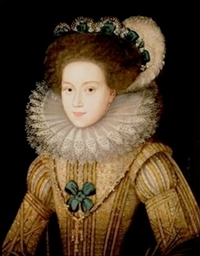by Daniel Hathaway

Led by its new artistic director, English countertenor David Acres, the 19 singers expertly presented 15 exquisite church motets by English, Scottish, Spanish and Italian composers of the Renaissance, embedded into a lengthy, printed narrative of Mary’s life with color images and supplemented by a few brief excerpts from her own writings delivered by actor Denise Larkin.
Performing music within its historical context with the help of images and spoken words can result in a rich experience for the listener when several streams run together to form a larger river. Mary’s life was full of the intrigue that makes her narrative worthy of an opera (Donizetti thought so), but Sunday’s program might have made some clearer links between events in Mary’s life and the music being sung.
To be sure, the playlist included composers in the British Isles who were tossed about linguistically, stylistically and often personally by the back-and-forth religious upheavals during the reigns of Henry VIII, Edward VI, the other (“Bloody”) Mary and Elizabeth I. But it also included works she probably never heard, written in cultures she never seems to have visited. Aside from a dozen years in France, she apparently spent her life on either side of the Scottish border, and may never have encountered polyphony by Spanish or Italian musicians.
The program ignored secular music — which Mary seems to have enjoyed, for she played the lute and virginals along with pursuing other royal entertainments like horsemanship and falconry.

Interleaved among such standards as Byrd’s Ave verum corpus, Victoria’s eight-part Ave Maria and Palestrina’s Super flumina Babylonis were rarer pieces like Clemens’s Ego flos campi, Rore’s Parce mihi Domine, Robert Johnson’s Dum transisset Sabbatum, Guerrero’s Ave Virgo sanctissima and Lobo’s Versa est in luctum — all delightful and lovingly performed. Only Lassus’s super-chromatic Timor et tremor sounded a bit shaky in its tuning. The concert ended with the most direct reference to Mary: Tallis’s solemn In manus tuas sets the very words that unfortunate lady mouthed from the scaffold before the ax fell. (Alas, the three brief spoken excerpts, including a prayer Mary wrote the night before her beheading, read by Denise Larkin from the cathedral’s pulpit, were mostly inaudible.)
Acres and the ensemble have made a fine beginning, and it’s terrific to have another skilled chamber choir performing regularly in Cleveland. Contrapunctus will be in residence at Trinity Cathedral, but will give its next program at the Cathedral of St. John the Evangelist on June 6 at 7:30 pm.
Published on ClevelandClassical.com March 10, 2014
Click here for a printable version of this article.



